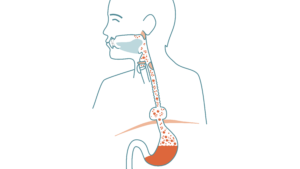Find relief for Hiatal Hernia with Chiropractic care
What is a Hiatal Hernia?
A hiatal hernia occurs when a part of the stomach pushes through the diaphragm. This condition can cause chest pain, abdominal discomfort, and acid reflux. The severity of symptoms often depends on the size of the hernia; smaller hernias may not cause any symptoms at all.
Expert Insights on Hiatal Hernia: An Interview with Dr. Emily Mayo
Why do I have a Hiatal Hernia?
This can result from physical stress that strains the stomach and esophagus, pushing the stomach through the diaphragm. Activities like heavy weight lifting, physical labor, trauma, and pregnancy can trigger this condition. Additionally, conditions such as asthma, lung issues, and constipation also place pressure on the stomach and esophagus. As a result, this added pressure can potentially lead to a Hiatal Hernia. Furthermore, managing these underlying conditions may help reduce the risk of developing one.
How can Chiropractic help me recover?
A specialized Chiropractic technique can help correct a Hiatal Hernia. Your Chiropractor will gently use their palm to guide the herniated part of the stomach back into its proper position below the diaphragm. This technique is applied as needed and helps keep the stomach in place, allowing the diaphragm and esophagus to heal and reducing the risk of the hernia recurring.
Additionally, when spinal joints are misaligned, they can compress nerves associated with those areas. Consequently, an irritated nerve may disrupt the function of organs connected to it, such as the stomach or diaphragm, by preventing proper communication from the brain. Therefore, your Chiropractor will carefully assess your spinal alignment and determine if a specific chiropractic adjustment is necessary to address any issues and restore proper function.
What can I do at home?
Balancing the muscles and fascia in the chest cavity can help to relieve tension that can stress a hernia. Your Chiropractor will analyze the tissue balance and recommend appropriate stretches.
